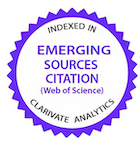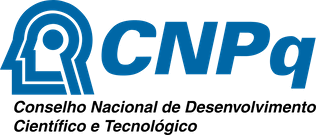Efeitos da privação alimentar de 48 horas na resposta de fase aguda em cavalos
DOI:
https://doi.org/10.1590/1809-6891v23e-72445EResumo
O objetivo deste estudo foi avaliar o efeito da restrição alimentar na resposta de fase aguda em equinos. Vinte cavalos foram submetidos à restrição alimentar por 48 h enquanto outros 12 animais (controle) tiveram livre acesso à água e alimento. Os animais foram monitorados, examinados e amostras de sangue foram coletadas no início (0) do estudo e com 6, 12, 18, 24, 30, 36, 42 e 48 horas de restrição alimentar. Os dados foram submetidos à análise de variância bidirecional com medidas repetidas e a significância estatística foi P ≤ 0,05. Os cavalos toleraram a restrição alimentar sem complicações clínicas relevantes. A restrição alimentar induziu uma resposta de fase aguda caracterizada pela elevação das concentrações séricas de α2-macroglobulina (24-38 h), ceruloplasmina (36-48 h), α1-antitripsina (30-48 h), α1-glicoproteína ácida (42-48 h) e haptoglobina (42-48 h). A privação de nutrientes eleva os níveis de cortisol circulante, que atua no sistema imunológico inato o qual, então induz a resposta de fase aguda. Em conclusão, a restrição alimentar é um fator estressor físico para equinos, capaz de induzir uma reação proteica de fase aguda, caracterizada pelo aumento na produção de α2-macroglobulina, ceruloplasmina, α1-antitripsina, α1-glicoproteína ácida e haptoglobina.
Palavras-chave: Equinos; Restrição alimentar; Inflamação; Resposta imune; Proteína; Estresse.
Downloads
Referências
Park SK, Jung HJ, Choi YL, Kwon OS, Jung YH, Cho C, Yoon M. The Effect of Living Conditions on Stress and Behavior of Horses. Journal of Animal Science and Technology. 2013;55: 325-330. https://doi.org/10.5187/JAST.2013.55.4.325.
Mason G, Clubb R, Latham N, Vickery S. Why and how should we use environmental enrichment to tackle stereotypic behaviour? Applied Animal Behaviour Science. 2007;102:163-188. https://doi.org/10.1016/j.applanim.2006.05.041.
Carroll JA, Reuter RR, Chase CCJR, Coleman SW, Riley DG, Spiers DE, Arthington JD, Galyean ML. Profile of the bovine acute-phase response following an intravenous bolus-dose lipopolysaccharide challenge. Innate Immunity. 2009;15(2):81-89. https://doi.org/10.1177/1753425908099170.
Murata H, Shimada N, Yoshioka M. Current research on acute phase proteins in veterinary diagnosis: an overview. Veterinary Journal. 2004;168:28–40. https://doi.org/10.1016/S1090-0233(03)00119-9.
Cray C, Zaias J, Altman NH. Acute phase response in animals: a review. Comparative Medice. 2009;59(6):517-526. https://www.ncbi.nlm.nih.gov/pmc/articles/PMC2798837/
Carroll CL, Huntington PJ. Body condition scoring and weight estimation of horses. Equine Veterinary Journal. 1988, 20(1):41-45. https://doi.org/10.1111/j.2042-3306.1988.tb01451.x.
Kaneko, J. J.; harvey, J. W.; bruss, M. L. Clinical biochemistry of domestic animals. 6ª ed. San Diego: Academic Press, 2008.
Laemmli UK. Cleavage of structural proteins during the assembly of the head of bacteriophage T4. Nature. 1970;227(5259):680-685. https://www.nature.com/articles/227680a0.
SAS. Institute. Statistical Analysis System: user guide [CD-ROM]. Version 8. Cary (NC): SAS Insitute, 1999.
Kim MH, Yang JY, Padhaya SD, Lee HJ, Yun CH, Ha JK. The stress of weaning influences serum levels of acute-phase proteins, iron-binding proteins, inflammatory cytokines, cortisol, and leukocyte subsets in Holstein calves. Journal Veterinary Science. 2011;12(2):151-157. https://doi.org/10.4142/jvs.2011.12.2.151.
Grandin T. Assessment of stress during handling and transport. Journal of Animal Science. 1997;75:249-257. https://doi.org/10.2527/1997.751249x.
Arthington JD, Eichert SD, Kunkle WE, Martin FG. Effect of transportation and commingling on the acute-phase protein response, growth, and feed intake of newly weaned beef calves. Journal of Animal Science. 2003;81(5):1120-1125. https://doi.org/10.2527/2003.8151120x.
Sunil Kumar BV, Singh G, Meur SK. Effects of addition of electrolyte and ascorbic acid in feeding during heat stress in bufalloes. Asian-Australas Journal of Animal Science. 2010;23:880-888. https://doi.org/10.5713/ajas.2010.90053.
Kelley KW. Stress and immune function: a bibliographic review. Annales Recherche Veterinary. 1980; 11:445-478. https://hal.archives-ouvertes.fr/hal-00901297/document.
Lee H, Khan MA, Lee W, Kim H, Ki K, Kang S, Hu TY, Choi Y. Growth, Blood Metabolites, and Health of Holstein Calves Fed Milk Replacer Containing Different Amounts of Energy and Protein. Journal of Animal Sciences. 2008;21:198-203. https://doi.org/10.5713/ajas.2008.70261.
Murray MJ, Eichorn ES. Effects of intermittent feed deprivation, intermittent feed deprivation with ranitidine administration, and stall confinement with ad libitum access to hay on gastric ulceration in horses. American Journal of Veterinary research. 1996;57(11):1599-603. http://dx.doi.org/10.2376/0005-9366-120-134.
Marques RS, Cooke RF, Francisco CL, Bohnert DW. Effects of twenty-four hour transport or twenty-four hour feed and water deprivation on physiologic and performance responses of feeder cattle. Journal of Animal Science. 2012;90(13):5040-5046. https://doi.org/10.2527/jas.2012-5425.
Marques RS, Bohnert DW, Sousa OA, Brandão AP, Schumaher TF, Schubach KM, Vilela MP, Rett B, Cooke RF. Impact of 24-h feed, water, or feed and water deprivation on feed intake, metabolic, and inflammatory responses in beef heifers. Journal of Animal Science. 2019;97(1):398-406. https://doi.org/10.1093/jas/sky397.
Lyoumim S, Tamion F, Petit J, Déchelotte P, Dauguet C, Scotté M, Hiron M, Leplingard A, Salier JP, Daveau M, Lebreton JP. Induction and modulation of acute-phase response by protein malnutrition in rats: comparative effect of systemic and localized inflammation on interleukin-6 and acute-phase protein synthesis. Journal of Nutrition. 1998; 128(2):166-74. https://doi.org/10.1093/jn/128.2.166.
Cooke RF. Invited paper: nutritional and management considerations for beef cattle experiencing stress-induced inflammation. The Professional Animal. 2017; 33:1–11. doi: https://doi.org/10.15232/pas.2016-01573.
Ceciliani F, Ceron JJ, Eckersall PD, Sauerwein H. Acute phase proteins in ruminants. Journal of Proteomics. 2012;75(14):4207-4231. https://doi.org/10.1016/j.jprot.2012.04.004.
Galyean ML, Lee RW, Hubbert ME. Influence of fasting and transit on ruminal and blood metabolites in beef steers. Journal of Animal Science. 1981;53:7–18. https://doi.org/10.2527/jas1981.5317.
Cole NA, Phillips WA, Hutcheson DP. The effect of pre-fast diet and transport on nitrogen metabolism of calves. Journal of Animal Science. 1986;62:1719–1731. https://doi.org/10.2527/jas1986.6261719x.
Cole NA, Hutcheson DP. Influence of prefast feed intake on recovery from feed and water deprivation by beef steers. Journal of Animal Science. 1985;60:772–780. https://doi.org/10.2527/jas1985.603772x.
Kvidera SK, Horst EA, Sanz Fernandez MV, Abuajamieh M, Ganesan S, Gorden PJ, Green HB, Schoenberg KM, Trout WE, Keating AF, Baumgard LH. Characterizing effects of feed restriction and glucagon-like peptide 2 administration on biomarkers of inflammation and intestinal morphology. Journal Dairy Science. 2017;100(11):9402-9417. https://doi.org/10.3168/jds.2017-13229.
Di Filippo PA, Duarte BR, Albernaz AP, Quirino CR. Effects of feed deprivation on physical and blood parameters of horses. Brazilian Journal of Veterinary Medicine. 2021;43(1): e000321. https://doi.org/10.29374/2527-2179.bjvm000321
Downloads
Publicado
Como Citar
Edição
Seção
Licença
Copyright (c) 2022 Ciência Animal Brasileira / Brazilian Animal Science

Este trabalho está licenciado sob uma licença Creative Commons Attribution 4.0 International License.
Autores que publicam nesta revista concordam com os seguintes termos:
- Autores mantém os direitos autorais e concedem à revista o direito de primeira publicação, com o trabalho simultaneamente licenciado sob a Licença Creative Commons Attribution que permite o compartilhamento do trabalho com reconhecimento da autoria e publicação inicial nesta revista.
- Autores têm autorização para assumir contratos adicionais separadamente, para distribuição não-exclusiva da versão do trabalho publicada nesta revista (ex.: publicar em repositório institucional ou como capítulo de livro), com reconhecimento de autoria e publicação inicial nesta revista.
- Autores têm permissão e são estimulados a publicar e distribuir seu trabalho online (ex.: em repositórios institucionais ou na sua página pessoal) a qualquer ponto antes ou durante o processo editorial, já que isso pode gerar alterações produtivas, bem como aumentar o impacto e a citação do trabalho publicado (Veja O Efeito do Acesso Livre).






























